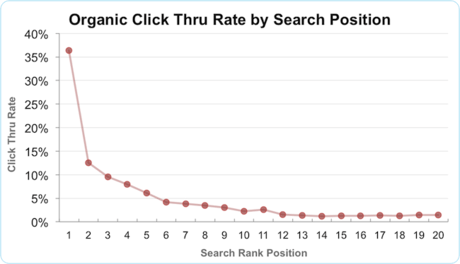Seo Secrets: 3 Ways To Improve Your Website Copy
For many small
businesses and startups, SEO is something of a mystery
Seo Secrets: 3 Ways To Improve Your Website Copy Pdf
Digital marketing is the bread and butter of the modern
business world. Brands are creating valuable relationships with customers
through social media and spreading awareness through SEO.
For many small businesses and startups, SEO is something of
a mystery. They know it’s important, and may know a few aspects of how to use
it, but implementation is another thing entirely. Fortunately, there are a few
simple changes that small businesses with limited resources can make. Here are
four ways to improve SEO quickly and easily.

Regularly Update Your Content

One of the things Google looks for when ranking websites is
that the site is active. Regularly updating your content shows the Googlebot
that there is something fresh and new to show your audience. It proves that
your site isn’t one of the millions online that’s been abandoned to drift off
into the abyss.
- To improve click through rates from search engines to your website, use these words in your title tags and meta descriptions. PRO TIP: Remember, title tags should be no more than 55 characters in length and meta descriptions should be no longer than 155 characters. Use this content checklist if you need more help.
- Five ways you can improve your website’s SEO strategy by improving your existing content, optimizing your site for mobile users, and building solid backlinks. Most commonly known as Search Engine Optimisation, SEO is one of the most valuable ways of improving your online business and it’s an essential element to factor into your website.
- When running any type of business or company, there are lots of things to keep in mind. You have to consider everything from what services or products you will offer next to when you’re going to launch that new marketing or ad campaign.
Check your keyword density When you add website keywords, pay attention to how often they are repeated within your copy. This is known as your keyword density. Generally, it is recommended that your keywords reflect between 2-3% of your copy, which means you can add your keyword 2 to 3 times per 100 words.
Getting into a regular content schedule is the first step to
improving your SEO. If the idea of diving into keyword research is too
challenging at this time, take subject inspiration from similar sites and write
pieces that answer questions and solve problems relevant to your business.
Optimize Your Images

When you’re posting photos on a website, they should be
high-quality. That being said, they don’t have to be as high resolution as they
would be, if you were printing the images for display on your walls. Optimizing your images for the web can
drastically decrease your page load time, which is another thing that Google
considers when ranking a website.
Some platforms have built-in optimization tools. WordPress
is well-known for offering this feature. Otherwise, images will have to be
reduced manually before uploading. In addition to resizing images, you should
also take the time to add alt tags and relevant titles to enhance your SEO from
behind the scenes.
Improve Your Inbound and Outbound Links
Links play an important role in SEO. Both links in your
content that lead to other sites and links from other sites back to your page
will improve your Google ranking. Outbound links – those in your content
linking to other pages – will show Google that you’re connected with relevant,
high-quality content that supports your information. Be sure to choose
well-recognized sites with content that relates to the information you’re
sharing.
Inbound links show Google that your information is relevant
and reliable enough that other sites are linking back to you. You can gain inbound
links by guest posting on other sites (which also raises your brand awareness)
or using outreach to have links included on other pages. Beware when trying
this SEO-boosting method: using spammy, low-quality sites will result in a
penalty and downrank you.
Hire the Experts
The easiest way to improve your SEO quickly and easily is to
outsource this service to someone who understands SEO and knows how to make and
implement a successful strategy. This approach is ideal for large businesses
looking to take their web traffic to the next level, as well as small
businesses that lack the resources to support an internal team.
When looking for an SEO expert, look for someone with proven
case studies of their success. They should be open about the tools they use to
offer full service SEO services, as well as their
approach. Work with a company that’s transparent about the analytics they’re
using and willing to explain what they mean and why they matter. There should
be no secrets about a process that millions of businesses are already using.
Final Thoughts
Every business, regardless of size, should take the time to develop some in-house knowledge about how SEO works. This allows for calculated digital marketing strategies and small changes that make a big impact over time.
Are you a content writer? Improve your content writing for SEO with these 10 tips from Titan Growth.
It’s no secret that SEO and content go hand-in-hand.
After all, without SEO your content may be lost somewhere on page 50 of the search results; and we all know traffic on those pages is less than satisfactory. Likewise, your first-page ranking can only do so much if your content post-click is crummy. That’s why a good relationship between SEO and great content is essential! Here are 10 tips on how to write SEO content to make your content go further and enhance your SEO efforts at the same time.
SEO Writing Tips to Make Your Content Go Further
1. Write for your audience first
This SEO writing tip is number one for a reason. It seems easy enough, yet so many companies make content for all the wrong reasons. Write content that appeals to the interests of your target market or answers their questions. Not all posts need to be about your product or service, but they all should be industry related. Assert yourself and your company as an expert in your industry by writing SEO-friendly content that is interesting and informative, and do it better than your competition.

2. Keep it all under the same roof
Get the credit and traffic your website deserves by keeping your original content under your own domain name. That means if you have a blog opt out of hosting with WordPress or Blogger and host the blog in a subfolder on your own domain (ie: www.example.com/blog ). Any time you have an opportunity to showcase other forms of original content like videos, infographics or whitepapers, make sure to also embed them onto your website as well and share from there. The victorian curriculum f10effective curriculum ideas lesson.

3. Make headlines that pack a punch
You have a very short amount of text to make a very big impression. So don’t underestimate the power of an effective headline! Write headlines that are clear, interesting and make use of rich keywords. In addition to a great headline, also make sure your meta descriptions are interesting and further elaborate on the topic of your article. Keep in mind that your title and meta description are what show up in the search results, so make them count!
4. Use keyword-rich phrases
Use relevant, keyword rich phrases in your headlines as well as throughout your content to let both your readers and the search engines know what your post is about. But beware, too many keywords will not only turn off your readers but can result in search engine penalties for keyword stuffing. Use keywords thoughtfully and sparingly, sticking to a more natural feel. In addition to using keywords throughout the body of your post, take advantage blog tags by tagging a few relevant keywords for each post; most general blogs have tagging capabilities already built in.
Seo Secrets: 3 Ways To Improve Your Website Copy Paste
5. Structure your posts
The contents of your post may be great but can be easily lost in an unorganized, inefficient format. Breaking your content up into smaller paragraphs with headlines makes for an easy read that will keep your readers engaged. For the search engines, back-end organization is key too. Using proper tag hierarchy when tagging headlines (H1 for titles, H2 for subtitles) is important to maintain a well-structured article.
6. Incorporate imagery
Make your posts pop with images! People are visual. Adding an image along with your blog post can make a big impression. Have a Pinterest account? In addition to promoting your blogs across your other social media channels, posts with images can also be pinned, adding another avenue for traffic to your website.
7. Propel content with social media
Social media is a powerful tool that can help increase the reach of your content and promote sharing. Post each new article on social media sites and in forums, using engaging descriptions and a call-to-action. Since the power of social media lies in sharing, it’s also important to have share buttons on each of your blog posts. If you want more control of how your links appear when they’re shared, implementing Twitter Cards for Twitter or Open Graph for Facebook (technical) can give your shared links a boost, and may help your click-through rates.
8. Implement Google Authorship
Google Authorship is a quick and easy way to tie content to a certain author, all you need is a Google+ account. As a result, your articles come up as rich snippets in the search results featuring the author’s photo along with the article title. Google Authorship is great for personal promotion, but can also increase the click through rate to your articles. If you’re an author, learn how to set up Authorship for your website.
9. Promote natural link building
Link building has come a long way since the days of link buying and link farms, but links are still an important ranking factor for SEO. Linking to your own articles or website in your post ensures a link back to your website if your article is picked up by another site. If you get creative with other types of content like infographics and videos, adding an embed code on your site helps to promote content sharing and also adds a link back to the original source. Creating great content helps increase the sharability and the likelihood that other websites will link to it, so aim for quality!
10. Monitor your activity
Stay on top of your SEO friendly content by monitoring your efforts. Google Analytics is an easy and free way to track your page views and the average time spent on a page. Check things like your bounce rate and time on site to get an idea of how users interact with your website after landing on your content. If you see a high drop off in addition to a low average time spent on the page, that’s an indication that your content wasn’t relevant to what they were looking for, or worse, wasn’t interesting. Also, take a look at the number of social interactions (shares, likes, etc ) to get an idea of the virality of your post. Just looking at these simple metrics can give you a good idea of which content pieces are well-received and liked so that you can replicate that type of content down the road.
Both SEO and content writing are important pieces to the puzzle, so it’s important to use quality techniques for both to ensure higher traffic and engagement on your website. If you have any questions about SEO, content or how they work together, feel free to contact us for more SEO writing tips!
Submitted by Erica Machin, Titan Growth
